A clever wolf repeatedly snuck into a Minnesota ranch. Biologists figured out its MO.
Published in News & Features
ORR, Minn. — Nothing seemed to stop Wolf 04D.
The wildlife biologists thought they had ended a decades-long struggle between rancher and wolf when they built a 7.5-mile fence in the heart of Minnesota’s wolf territory. Even the rancher, Wes Johnson, had high hopes when he came across a wounded deer on his land and saw that the wolves chasing the deer could not find a way around the fence.
Maybe they were gone for good, he thought.
But only a few weeks after the fence was finished, Thomas Gable of the Voyageurs Wolf Project figured out that Wolf 04D had slipped through a gap near the front gate. He plugged the gap.
A short while later the wolf was back on the ranch, this time through a hole in the fence near a creek. Gable filled that hole with logs. Then he went back, the next day, to find that Wolf 04D had already methodically torn out the logs and made her way back on the ranch.
This time, Gable filled the hole with stones that the wolf could not move. That worked until the creek flooded, and all the driftwood gathered in the rising water created a small curl at the base of the fence. The wolf squeezed under the curl. When the curl was fixed, 04D traveled a few miles to the other side of the ranch where she found soft-enough ground to pull out the anchors that attached the apron of the fence to ground and snuck in again.
After the anchors were reinforced, Wolf 04D found another small gap where the fence runs into the Black Duck River near the entrance to the ranch. For more than a year, from the fall of 2022 to late 2023 the wolf prodded, dug, squeezed and tunneled her way onto the ranch more times than Gable can count.
“It was frustrating, it was so frustrating,” he said.
But last week, standing in the tall grass of the ranch as a dozen cows lazily grazed, Gable said he realizes how lucky it was that the one wolf in all of northern Minnesota most determined to get on the ranch happened to be a wolf that had a GPS collar around its neck. It was placed years before as part of the Voyageurs Wolf Project’s research.
Gable likened it to a security firm hiring a hacker to find the flaws in its system.
“She showed us exactly where to find every weak spot we had,” Gable said.
There were 192 calves born on the ranch this spring. On Nov. 11, Johnson counted 192 calves still grazing on his ranch.
“It’s the first time nothing’s disappeared,” he said. “We never had none get sick and never lost any to wolves.”
There have been no signs of wolves breaching the fence this year. No 04D. No other collared wolves. No paw prints, or scat.
The most obvious sign they haven’t been around is in the behavior of the cows, Johnson said.
When predators are constantly around, the cows get stressed, especially during calving season. In those two to three days after calves are born, anxious cows can be dangerous, overly defensive and nervous. They charge ranchers. They accidentally step on their own calves. They panic and get twisted up and break their legs. They don’t eat and lose weight.
“There’s years that them cows are trying to kill you,” Johnson said.
But this spring, the cows were calm. None charged.
And, for the first time in at least two decades, no wolves had to be hunted down and killed, either.
Wolves that kill livestock in Minnesota almost always pay with their lives. To protect both livestock and wildlife, researchers have been trying to find ways for nearly a century to keep wolves in the state from entering people’s ranches.
Johnson’s ranch sits in the densest part of the state’s wolf territory, and is surrounded on all sides by five active packs south of Voyageurs National Park. At 1,600 acres with 750 head of cattle, it’s not just the biggest ranch in wolf territory, but one of the trickiest terrains. It’s hilly, and has marshy land on one of its borders. Ninemile Creek and the Black Duck River run through it.
If a fence can keep wolves out here, Gable said, it can keep them out pretty much anywhere.
The Wisconsin Department of Natural Resources has been trying out similar fences over the last four years. The fences built have been much smaller — enclosing 40 acres or less. They work more as pens, where cows can give birth in peace and then the calves can rotate out when they’re older and less vulnerable. The state reports no wolves have made it inside the six fences that have been installed.
Fences are no small investment, however. Johnson’s 7.5-mile fence cost roughly $70,000 in materials, plus hundreds of man-hours provided by Gable, his research partner, Austin Homkes, Johnson and the USDA to install it. If they had to contract out the installation work, the fence would have cost several hundred thousand, Gable said.
But shooting problem wolves is expensive, too.
Every spring Johnson would lose a handful of calves to wolves soon after they were born. The public has to pay to reimburse ranchers for any wolf-killed livestock, and it pays federal trappers to hunt problem wolves. In Johnson’s case, the trappers were called in after each incident to kill up to a dozen wolves in the area.
Johnson also lost tens of thousands of dollars over the last two decades to lost cattle. Wolves don’t always leave enough of a trace of their prey for ranchers to be able claim their losses. Johnson estimates he only got reimbursed for one out of every three calves he lost over the years.
And no matter how many wolves the federal trappers killed each spring, new wolves would return the next year, kill a handful of Johnson’s calves and start the cycle again.
The killings became a problem for Gable and the Voyageurs Wolf Project because they kept disrupting their research. The biologists spend weeks trapping and collaring wolves in the area hoping to study pack behaviors and dynamics, and their impact on deer, beaver and the rest of the natural world, only to see several of their collared wolves get shot by federal trappers each year.
They gathered support from the University of Minnesota, the Environmental and Natural Resources Trust Fund, the Humane Society and other groups to work with Johnson and the USDA to see if the fence could be a more permanent solution.
Standing in a field as 13 bulls walked down to take a sip from the creek that had caused so many problems with the fence last year, both Johnson and Gable seem to think the peace will last. Wolf 04D won’t be able to test for any weaknesses or try their patience. She was killed by a car this summer at the age of 8, very old for a wild wolf.
Before her death, Gable and Johnson brought in one final measure of protection to wolf-proof the fence — a pair of large guard dogs. The dogs, a male and a female both with stark white fur, are twice the size of any wolf. Gable tried to name them, but Johnson just calls them dog and dog.
They offer a double layer of protection should any new gaps in the fence be exposed. Wolf packs are highly territorial and try not to venture into another pack’s zone. So the dogs’ scent, and vicious gravely bark, should be enough to ward off all but the most bold wolves. They’re big enough to chase off any wolf that does sneak in, Gable said.
They’ve seen the dogs sniff the air, then run off barking to the fence when they smell a wolf approach the border.
The dogs were bred and trained to keep their distance from humans. They bond with cows. But one of the dogs, the male, couldn’t help but walk up to Johnson.
“He’s my buddy,” Johnson said and patted him on the head.
The dog started with a tail wag that turned into a whole body wiggle. Then he sniffed the air and sat back down. All was calm on the ranch.
©2024 The Minnesota Star Tribune. Visit at startribune.com. Distributed by Tribune Content Agency, LLC.
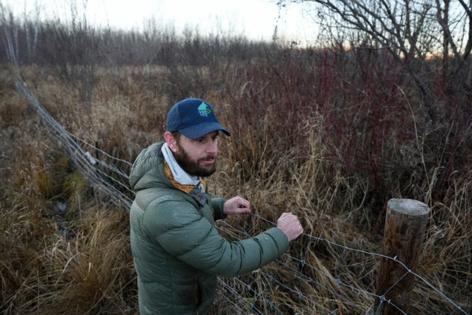
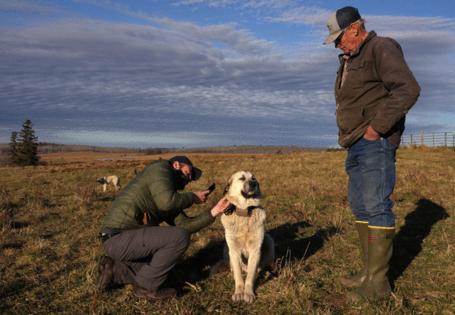
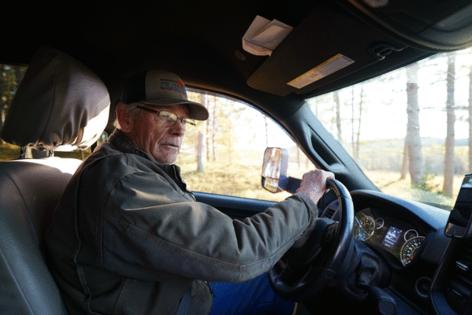
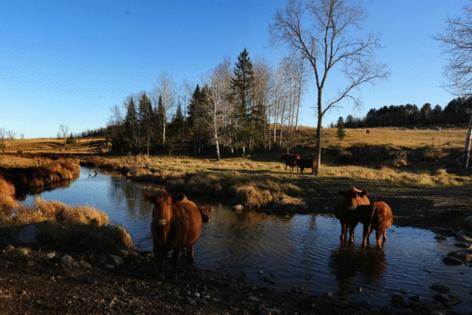
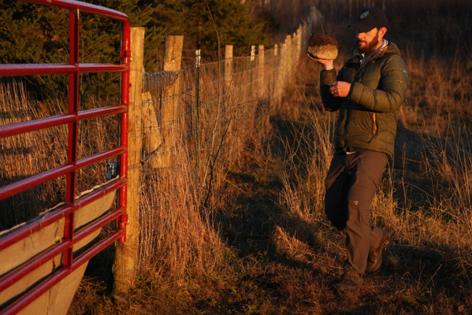











Comments